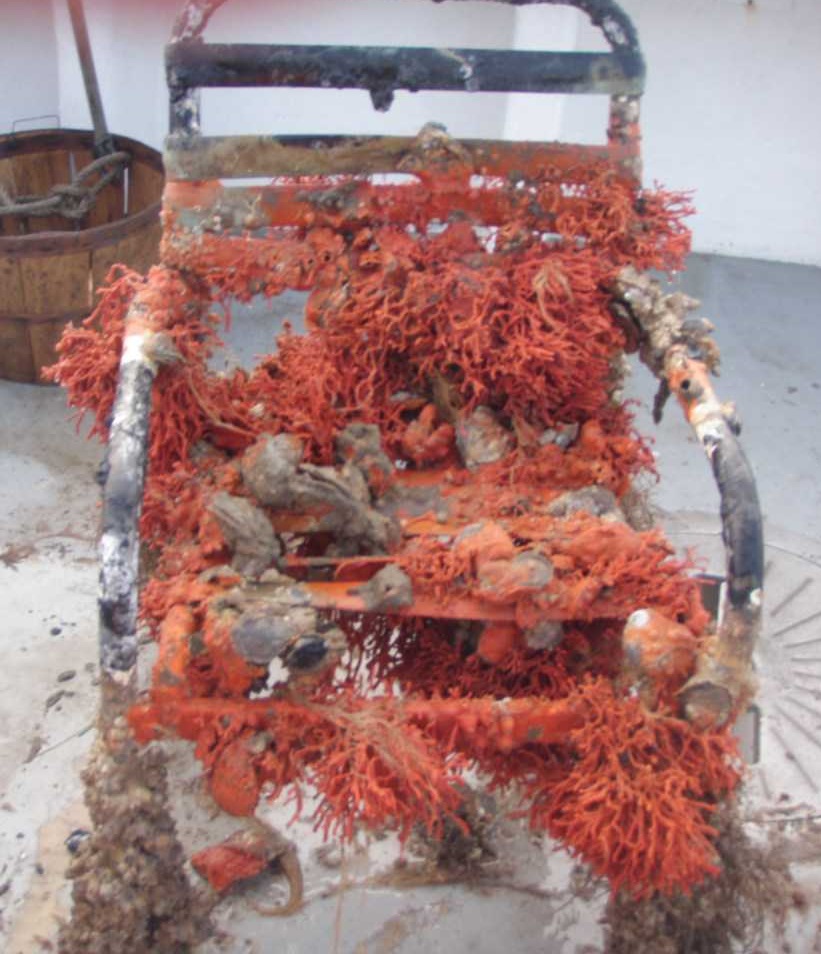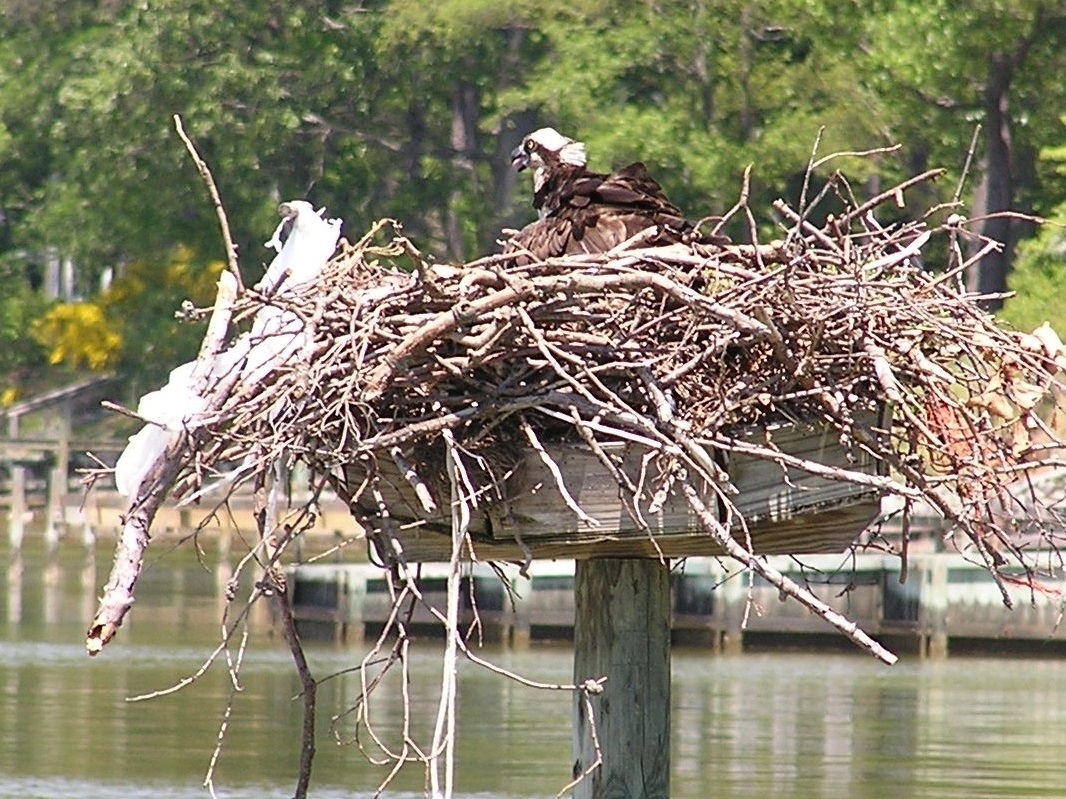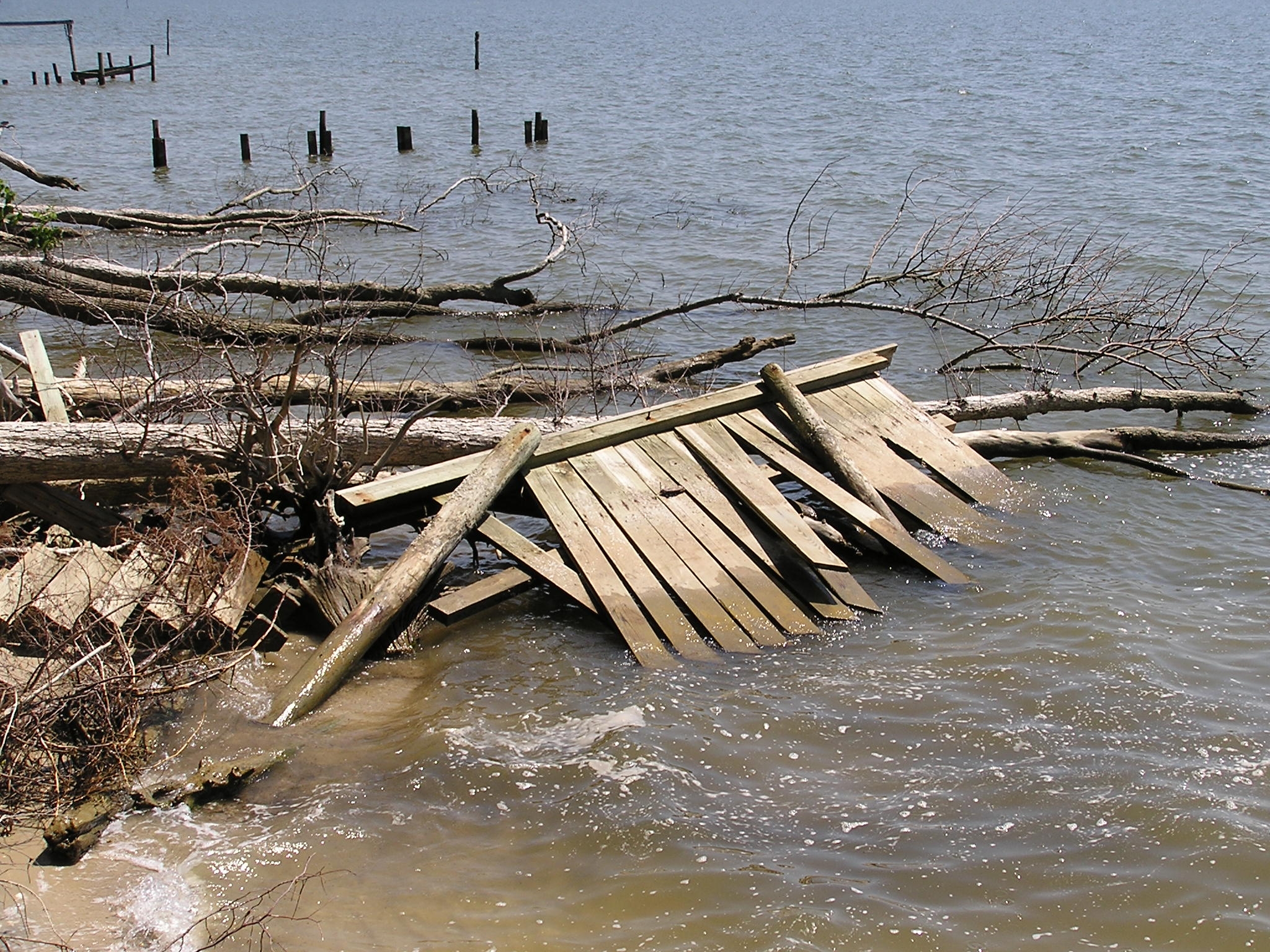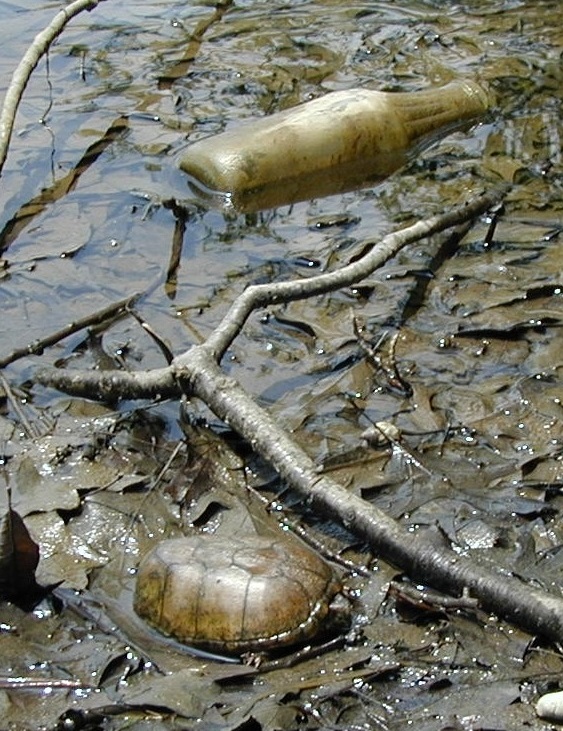Marine Debris Problems
 The most familiar impact from marine debris is wildlife entanglement and ingestion. There are many documented cases of marine animals that died because they ate or became entangled in marine debris. Sea turtles ingest items that look like jellyfish and other natural prey, such as balloons and bags. A majority of marine debris is made up of plastics.
The most familiar impact from marine debris is wildlife entanglement and ingestion. There are many documented cases of marine animals that died because they ate or became entangled in marine debris. Sea turtles ingest items that look like jellyfish and other natural prey, such as balloons and bags. A majority of marine debris is made up of plastics.
 The Chesapeake Bay is continually polluted with a wide variety of marine debris including derelict crab traps. Derelict (lost or abandoned) blue crab traps (pots) can continue to capture and kill animals for several years depending upon salinity and wave climate “Ghost fishing” by derelict fishing gear is another type of marine debris impact. CCRM researchers quantified the death of over 31,000 blue crabs, fish, birds, and turtles in crab pots that continued to catch and kill animals during a 6-year study.
The Chesapeake Bay is continually polluted with a wide variety of marine debris including derelict crab traps. Derelict (lost or abandoned) blue crab traps (pots) can continue to capture and kill animals for several years depending upon salinity and wave climate “Ghost fishing” by derelict fishing gear is another type of marine debris impact. CCRM researchers quantified the death of over 31,000 blue crabs, fish, birds, and turtles in crab pots that continued to catch and kill animals during a 6-year study.
Wildlife impacts from marine debris are not limited to aquatic animals. Osprey sometimes collect marine debris and bring it back to their nests, which can entangle or be ingested by their nestlings.
 Other Marine Debris Impacts:
Other Marine Debris Impacts:
- Ingestion
- Entanglement
- Habitat damage
- Vessel damage
- Economic loss
- Alien species transport
 Consistent Top 5 Items in Virginia’s Coastal Cleanups:
Consistent Top 5 Items in Virginia’s Coastal Cleanups:
- Cigarettes/Cigarette Filters
- Beverage Bottles (plastic)
- Bags
- Food Wrappers/Containers
- Beverage Cans
Source: Virginia Marine Debris Reduction Plan, 1995-2013 data

